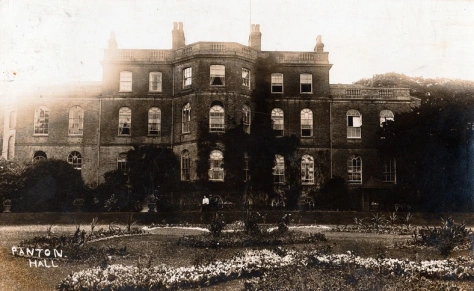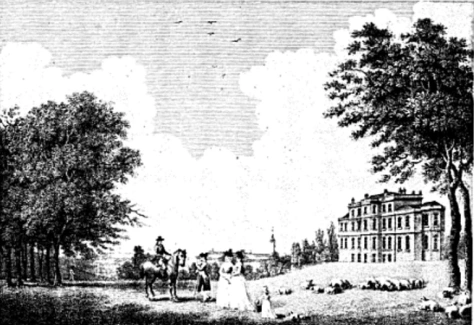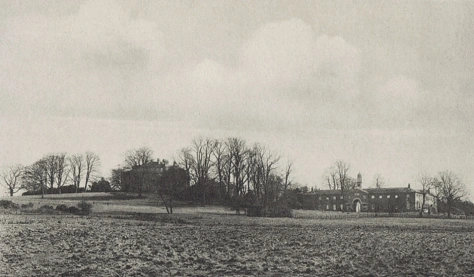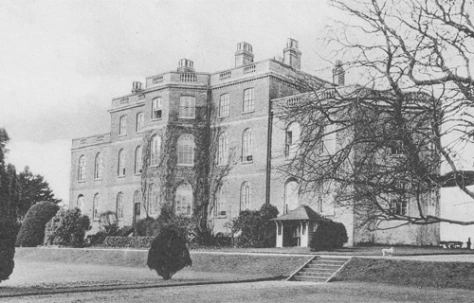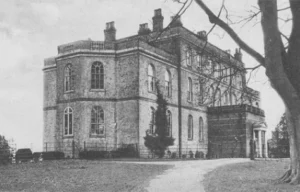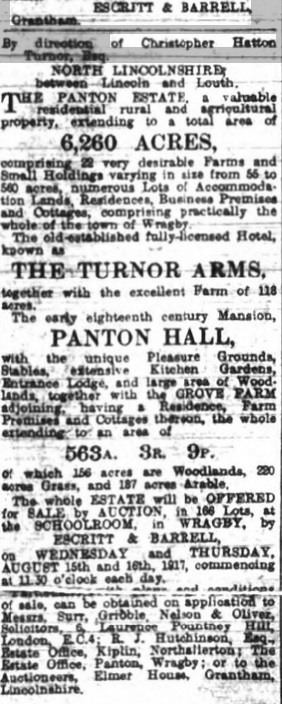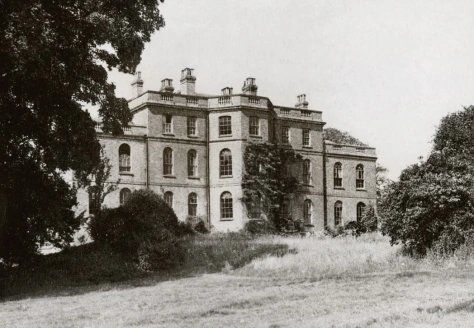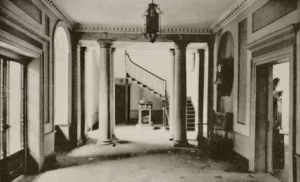The Grandeur and Decline of Panton Hall
Panton Hall, a magnificent country house in Lincolnshire, was a true architectural gem, built around 1720. Despite its historic significance and grandeur, the house met a tragic fate, being demolished in 1964 due to the financial strains of upkeep. This article explores the fascinating history, architectural splendor, and eventual downfall of Panton Hall.
Panton House. From The Seats and Nobility and Gentry in Great Britain and Wales in a Collection of Select Views.
The Origins of Panton Hall
A Visionary Beginning
Panton Hall was originally commissioned by the Gace family, a prominent lineage in Lincolnshire. The house was strategically built on an elevated location, offering stunning views of the Lincolnshire Wolds. Joseph Gace, who served as Receiver of the Land Tax for Lindsey, played a pivotal role in the estate’s early years.
Panton Hall seen from parkland to the north west (Revival Heritage)
The Architects Behind the Masterpiece
The initial design of Panton Hall was entrusted to William Talman (1650–1719), a distinguished architect known for his work at Chatsworth House. However, his untimely death in 1719 led to the appointment of Nicholas Hawksmoor (1661–1736) to oversee the project’s completion. Hawksmoor, a disciple of John Vanbrugh, had honed his skills at Castle Howard and Blenheim Palace, ensuring that Panton Hall was crafted with architectural brilliance. The house, with its three-story central block and front canted bay, was finally completed in 1727.
Panton Hall (Lost Heritage)
The Changing Hands of Panton Hall
The Gace Family’s Financial Struggles
Despite its grandeur, the Gace family struggled with financial difficulties, ultimately losing ownership of Panton Hall. In 1742, the estate passed to Gace’s son-in-law, Carr Brackenbury, who maintained possession until his death in 1763.
The Arrival of the Wolff Family
In 1767, the house was acquired by Sir Jacob Wolff (1740–1809), son of Baron Godfrey Wolff of Moscow. Despite his noble lineage and marriage into the prominent Weston family, Wolff’s tenure at Panton Hall was short-lived. He failed to invest in the estate, leaving it in a state of neglect by the time he vacated the property.
The south end of Panton Hall (Lost Heritage)
The Turnor Family Era
A Grand Revival
The fate of Panton Hall changed dramatically when the Turnor family, one of Lincolnshire’s most influential landowners, took ownership. Edmund Turnor (1715–1805) purchased the estate in 1773 for £6,150, intending to restore its grandeur. His son, also named Edmund Turnor (1755–1829), continued this legacy, ensuring the estate remained a prominent seat of power and prestige.
Architectural Enhancements by John Carr
To elevate the mansion’s stature, the renowned architect John Carr of York (1723–1807) was commissioned to make significant alterations. The redesign included the addition of side wings, nine principal bedrooms, and spacious reception rooms. Carr also relocated the servants’ quarters to the basement, maximizing the space and elegance of the upper floors.
Auction advertisement. Lincolnshire Chronicle. July 28th 1917 (British Newspaper Archive)
Panton Hall as an Educational Institution
The Transformation into a Finishing School
In 1847, Panton Hall took on a new role as a finishing school for young women under the direction of Mrs. Leeke. The institution flourished until 1866, providing elite education and cultural refinement.
Monastic and Academic Use
In the early 20th century, the estate briefly became a Franciscan Monastery and Roman Catholic school. The monks occupied the Georgian mansion, while the stables were repurposed as educational facilities. The construction of new cloisters in 1931 reflected the monastic commitment to the estate.
Sir John Denton Marsden, 1st Baronet (British Newspaper Archive)
The Final Years and Demolition
Ownership by Sir John Denton Marsden
In 1935, Panton Hall was acquired by Sir John Denton Marsden, a businessman with deep ties to the fishing industry. Marsden resided in part of the estate and hosted social events. However, World War II took a toll on the property, with military occupation contributing to its decline.
The Gradual Decay and Auction
By 1944, the estate was in poor condition. Following Marsden’s death, the Panton Hall estate was put up for sale in 1946, but the mansion itself remained unsold. Attempts to repurpose the structure failed, and by the 1950s, it had become largely abandoned.
The Tragic End in 1964
Despite its historical and architectural significance, Panton Hall was ultimately demolished in 1964. The costs of upkeep and the shift in societal attitudes toward aristocratic estates sealed its fate. Today, only fragments of its past remain, echoing the grandeur that once defined this Lincolnshire masterpiece.
The garden front at Panton Hall seen shortly before demolition (Jack Hall)
Legacy and Remembrance
Preserving the Memory
While Panton Hall no longer stands, its legacy lives on in historical records and photographs. Its story serves as a reminder of the fleeting nature of architectural marvels and the challenges faced by grand estates over time.
Lessons from the Past
The rise and fall of Panton Hall reflect broader societal changes in Britain, particularly the decline of aristocratic wealth and the shifting priorities of landowners. As efforts continue to preserve other historic estates, Panton Hall’s story remains a cautionary tale of the need for sustainable conservation.
The decaying entrance hall leading to the main staircase (Revival Heritage)
Conclusion
Panton Hall’s journey from a prestigious mansion to an abandoned relic underscores the impermanence of human endeavors. Its architectural brilliance, historical significance, and ultimate demise highlight the complexities of estate management and preservation. Although lost to time, the memory of Panton Hall endures as a symbol of both grandeur and impermanence in British history.
- Evan Name Meaning - June 5, 2025
- Virginia’s Most Popular THC Infused Drinks - June 5, 2025
- Nebraska’s THC Infused Seltzer Recommendations - June 4, 2025

